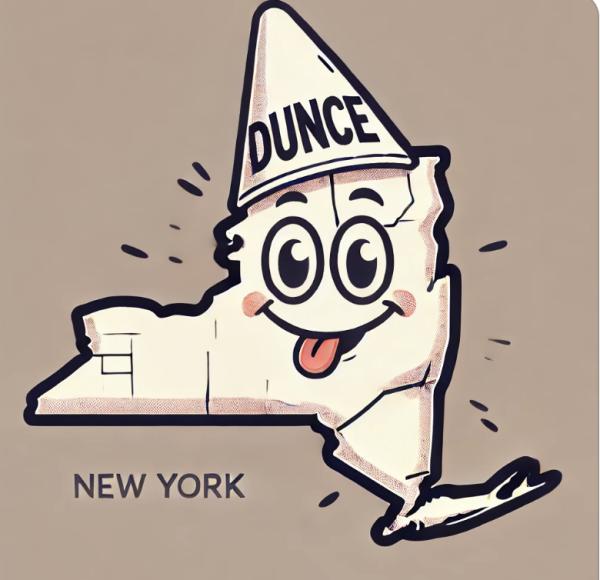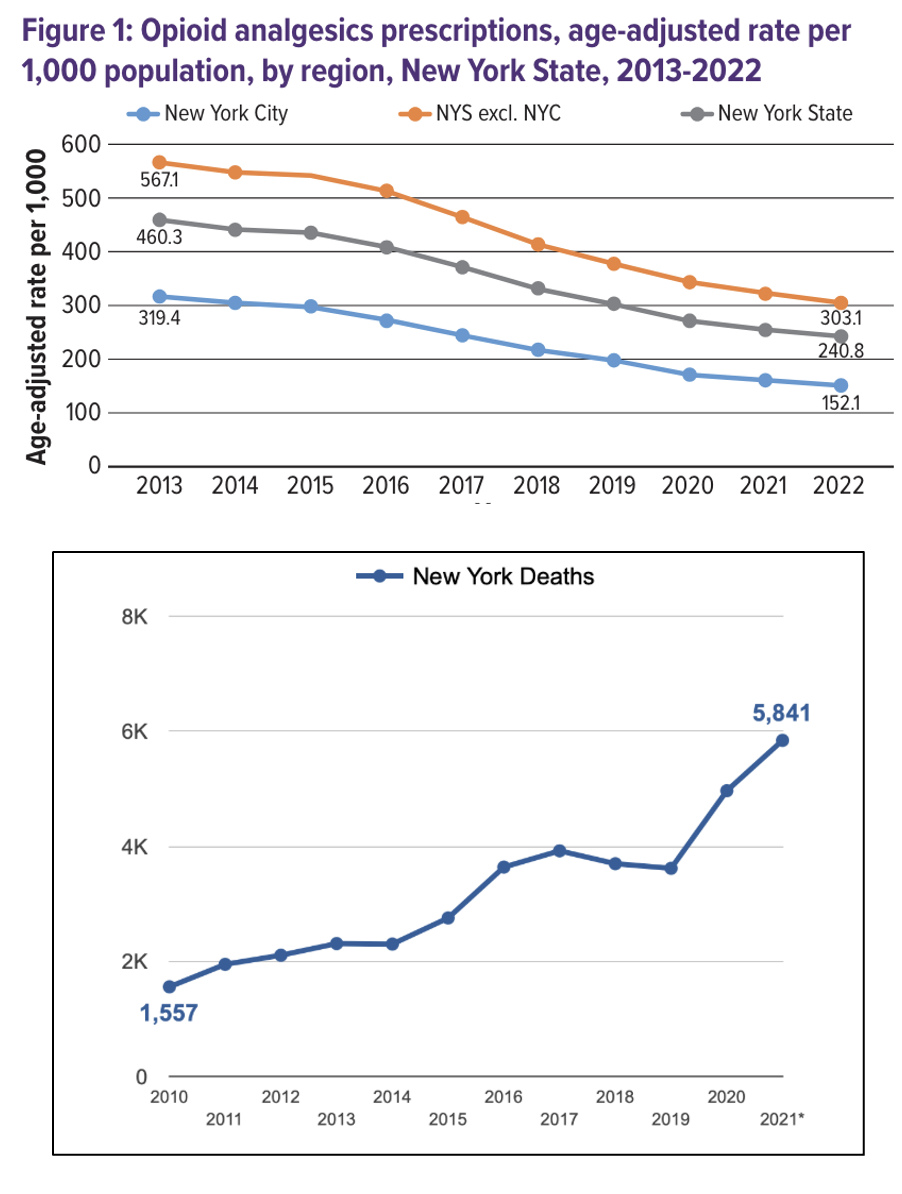
Let's have a round of zero applause for the New York State Department of Health for its June 24th publication to physicians, misnamed "Data to Action Opioid Prescribing in New York State." In a mastery of the self-evident, the authors reached this lame conclusion: if New York State actively discourages opioid prescriptions, then there will be fewer opioid prescriptions written in the state. Unstated is that this antiquated notion is doing far more harm than good, something that should be quickly apparent.
Intro: SOSDD (1)
The document starts with the traditional faux attempt to appear impartial.
"When used properly, opioids can provide benefits to the patient suffering from pain."
If this isn't the perfect time for the word "however" I'll eat my shoes.
"However, there are inherent risks to the use of these medications such as unintended overdose, substance use disorder, and negative societal impacts."
My shoes are safe. And so are the antiquated beliefs, overblown fears, and downright lies about opioid use that should have been put to rest long ago:
- Prescription opioids actually have very little to do with overdose deaths, unintended or otherwise. Even the miscreants at PROP have changed their tune, now acknowledging that illegal drugs like illicit fentanyl, either with or without some of the current additives are responsible for overdoses.
- Substance use disorder? Why single out opioids – useful and essential medicines – rather than street drugs like cocaine, and methamphetamine as well? Let's put them in.
Here are data from the CDC on the number of drug overdose deaths from different drugs in 2023:
- Illicit fentanyl, analogs, and other synthetic additives: ~74,000
- Psychostimulants (mostly methamphetamines): ~36,000
- Cocaine: ~30,000
- So-called "semisynthetics" (prescriptions like oxycodone, hydrocodone): ~10,000
Doing the "new math," of the roughly 108,000 people who died from drug overdoses in 2023 only 9% did so from prescription pain medications. But the percentage is actually smaller. Significantly smaller.
Let's add in the 178,000 annual deaths from excess alcohol (why this is not included in the discussion isn't clear) and now the annual deaths from substance abuse (not counting cigarettes) are about 278,000, with a whopping 3.6% of these due to prescription pain meds. This is what we're still getting hysterical about?
And even that number is artificially high because in overdose deaths where a prescription opioid is implicated multiple other drugs are frequently found, contributing to the lethality of the opioid. Suffice it to say that prescription opioid drugs only when taken properly and under medical supervision are minuscule contributors to overdose death totals, probably in the 1-2% range.
New York State to the rescue! Not.
State and federal regulators "have employed various strategies in response to the opioid crisis and its impacts."
Here are a few of the "accomplishments" that New York DOH brags about.
- Prescription Monitoring Program Registry (PMP) and electronic-only prescribing
- The limitation of initial opioid prescriptions for the treatment of acute pain
- A provision requiring providers to prescribe an opioid antagonist yearly when certain risk factors are present
How's that working out?
Not so well, really.

(Top) Between 2013 and 2022 the rate of opioid prescriptions in NY State was cut by half. (Bottom) During that same time, overdose deaths nearly tripled. How exactly does this represent progress?
More on the "accomplishments," such as they are.
PDMS's
Prescription drug monitoring plans made sense when pill mills were alive and well in the US. NY State fails to recognize that pill mills, which peaked around 2010, were largely gone in Florida – ground zero for illegal opioids – by 2015.
Now I don't even know where operators of "mills" would get pills to sell. Since 2013, oxycodone production quotas (set by the DEA) have decreased by 65% and oxycodone is now on the drug shortages list. PDMPs have morphed into a law enforcement tool to invade doctor and patient privacy and create an atmosphere of fear for physicians and guilt for anyone who dares fill a prescription for Ambien, especially if they have other scheduled drugs on their "records." (3)
An arbitrary 7 days
New York, much like other states, has determined that 7 days is the magic number after which people no longer have acute pain. Notably absent is that different surgeries and conditions have very different pain levels and timelines for recovery and the wide variation in individual response to opioids. One size fits none. Seven days may or may not be appropriate. Let's let physicians and patients, not the government, make that determination.
Obligatory naloxone - just plain dumb
Requiring that physicians write prescriptions for Narcan/naloxone when they prescribe opioids for certain people? (2) I'll let my frequent writing partner Dr. Jeffrey Singer of the Cato Institute and also a practicing surgeon tackle this:
This is a stupid one-size-fits-all edict that assumes our patients are too dumb to follow our instructions and haven’t yet heard that it is possible to overdose on opioids. I usually tell my patients, 'I have to prescribe Narcan for you, but you don’t have to pick it up from the pharmacist and pay for the drug unless you think you might not follow my instructions about what other substances to avoid while taking the pills or if you think you might ignore the dosage instructions and take too many pills at once.'
That's enough ragging on New York for now. However, perhaps it's time to update the logo:

The AI-generated image above may be humorous, but New York's nonsensical antiquated policies are anything but. Much like the damaging "voluntary" guidelines concocted by the CDC in 2016 they need to go away.
NOTES:
(1) SOSDD is an acronym for "same old s### different day."
(2) The "certain people" include those who are prescribed "a high dose" of opioids (90 morphine milligram equivalents or more), have a history of "substance use disorder," and are also taking a sedative like Valium.
(3) PDMPs do have a legitimate function: To alert physicians to other medications being taken a valuable tool in a fragmented system where electronic health records do not "speak" to one another. This is fine. Punitive use by law enforcement? Not so fine.



